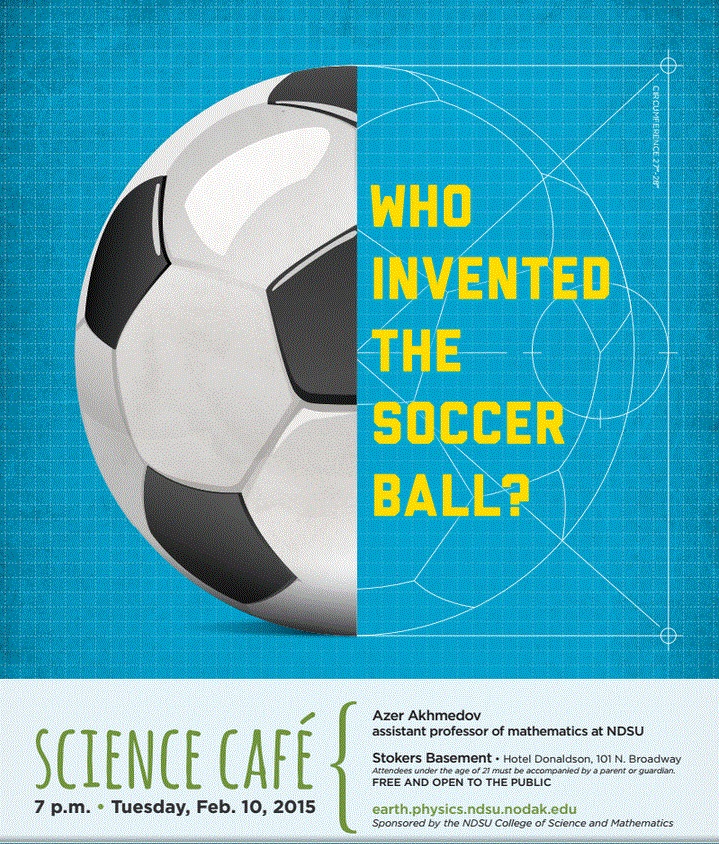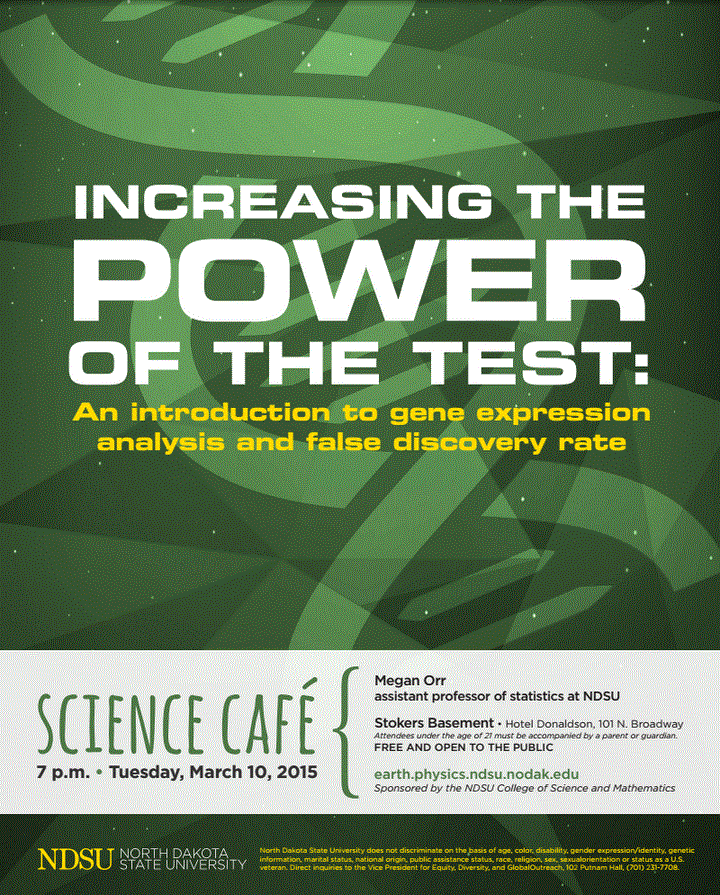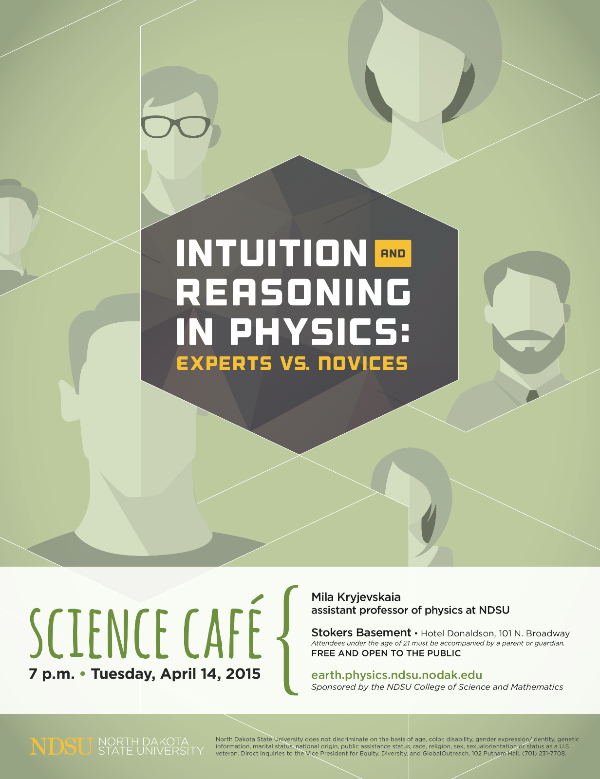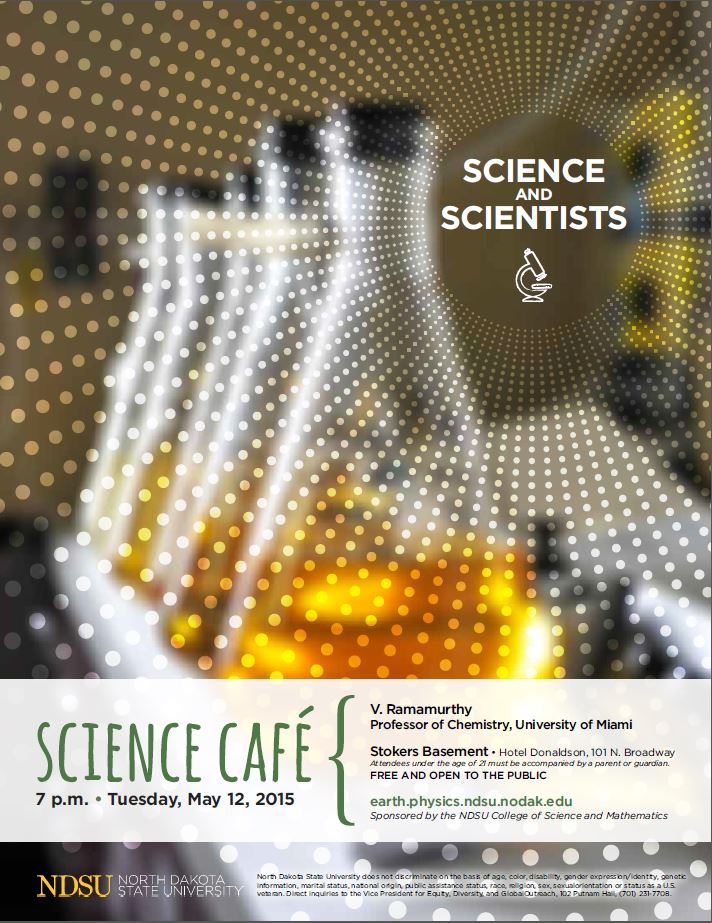
Who invented the soccer ball?
Azer Akhmedov
Department of Mathematics, North Dakota State University
Abstract: The soccer ball is a highly mathematical object: it is a convex polyhedron made of pentagons and hexagons. Moreover, at every vertex there exist exactly one pentagon and two hexagons. Thus any two vertices look locally the same.
Can one find all (convex) polyhedra where any two vertices look the same, i.e. we have the same polygons at every vertex with the same pattern? Obviously, Platonic solids (tetrahedron, cube, octahedron, dodecahedron, icosahedron) are such examples but are there many more?
In the talk, we will give a complete answer to this question. It turns out one can actually classify these polyhedra, in fact, besides the Platonic solids, there exist exactly 13 of them. Some of these polyhedra are more complicated than a soccer ball. Some of them (including the soccer ball) arise in different areas of mathematics revealing symmetries of the mathematical objects.

Increasing the power of the test: An introduction to gene expression analysis and false discovery rate
Megan Orr
Department of Statistics, University of South Dakota
Abstract: The prevalence of high-dimensional data has skyrocketed in recent years as advances in technology have allowed for the generation of such data sets. This is especially the case in gene expression experiments where the abundance of mRNA transcripts, known as gene expressions, are measured for thousands of genes simultaneously in experimental units from different treatment groups. A major goal in the analysis of these experiments is to identify genes that exhibit differential expression, i.e., a change in mean expression levels across treatments. Identifying such genes is typically accomplished by performing a hypothesis test for each gene. However, because of the high number of hypotheses being tested simultaneously, traditional hypothesis and multiple testing methods are not appropriate.
This talk will focus on the analysis of gene expression data sets and illustrate why using these traditional techniques are inappropriate. The false discovery rate, a common (and much more appropriate!) measure used to control for multiple testing error that leads to higher power for detecting differential expression, will be introduced. The original method for controlling false discovery rate, along with "newer and improved" methods will be presented.

Intuition and Reasoning in Physics: Experts vs. Novices
Mila Kryjevskaia
Department of Physics, North Dakota State University
Abstract: Many would probably agree that intuition is an essential component of expertise in many fields, including physics. Physics instructors often emphasize that they want their students to develop physical intuition. Physical intuition of experts, however, is distinctly different from that of novices. Moreover, our study of student thinking in physics suggests that, often, instead of applying the appropriate knowledge and skills learned in class, some novice learners tend to rely on intuitive ideas that lead to erroneous conclusions. What is intuition and how does it impact reasoning in physics? In order to answer these questions, we apply Dual Process Theory of reasoning and decision making developed by phycology researchers. The theory asserts that human cognition relies on two largely independent thinking processes. The first is fast and intuitive, while the second is slow, logically deliberate, and effortful. In many cases, these two processes yield different results. We will discuss the role of each process as well as the interaction between these processes in the reasoning of physics experts and novices.

Science and Scientists
V. Ramamurthy
Professor of Chemistry, University of Miami
Fulbright-Nehru Distinguished Chair
Senior Editor: Langmuir, American Chemical Society
Abstract: This talk is directed towards students and young researchers who wish to lead a life of a scientist and be satisfied and respected by their colleagues for their contributions. Life of a scientist could be a bit more complex than that of a an engineer, a physician, a businessman or an office employee whose job often does not require to be constantly creative and innovative. Life of a scientist could be really exciting although it could be demanding in terms of time and energy. In addition, a country's economic prosperity, to a large extent, relies on the contributions of scientists and their ability to add new knowledge that could be turned into monitory benefits for the society. This talk outlines various aspects of 'science and scientists' and is based on the following books by well-known scientists.
- Advice for a Young Investigator, Santiago Ramon-y-Cajal, Spanish version, 1898, (English version, MIT Press, 1999)
- Advice to a Young Scientist, P. B. Medawar, 1979
- Reminiscences and Reflections, H. Krebs, 1981
- The Beginner’s Guide to Winning the Nobel Prize, P. Doherty, 2006
- In Search of Memory, E. Kendal, 2006
- A Mathematician’s Apology, G. H. Hardy, 1940